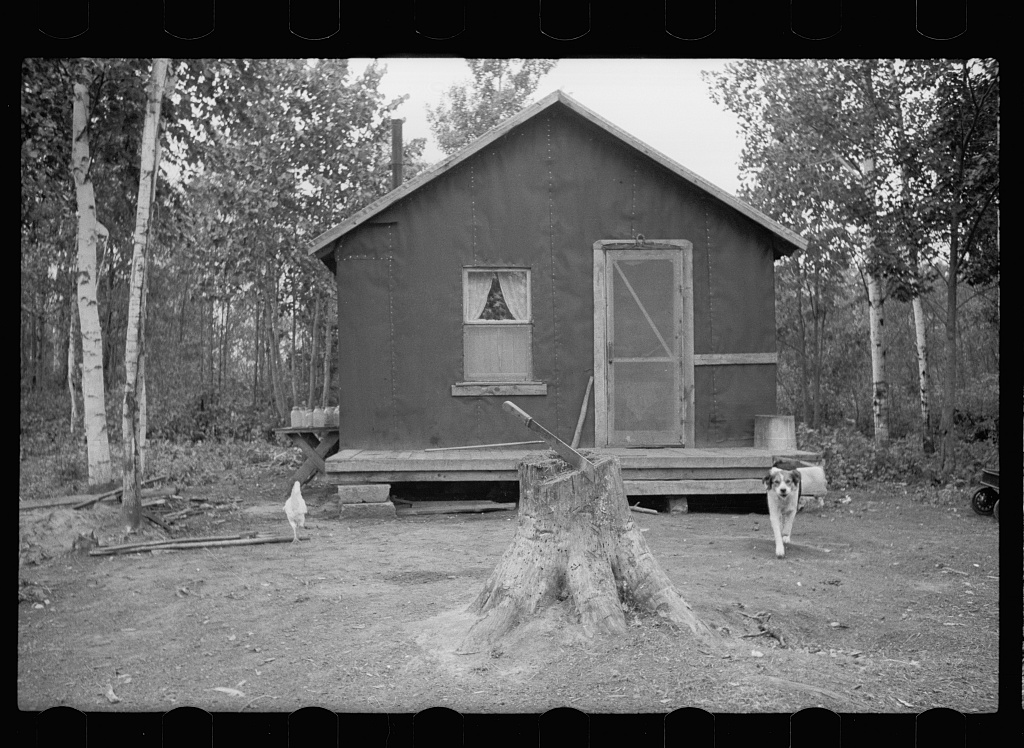tar paper on:
[Wikipedia]
[Google]
[Amazon]
 Tar paper, roofing paper, felt paper, underlayment, or roofing tar paper is a heavy-duty
Tar paper, roofing paper, felt paper, underlayment, or roofing tar paper is a heavy-duty
 In the 19th and early 20th centuries,
In the 19th and early 20th centuries,
 Tar paper, roofing paper, felt paper, underlayment, or roofing tar paper is a heavy-duty
Tar paper, roofing paper, felt paper, underlayment, or roofing tar paper is a heavy-duty paper
Paper is a thin sheet material produced by mechanically or chemically processing cellulose fibres derived from wood, Textile, rags, poaceae, grasses, Feces#Other uses, herbivore dung, or other vegetable sources in water. Once the water is dra ...
used in construction
Construction are processes involved in delivering buildings, infrastructure, industrial facilities, and associated activities through to the end of their life. It typically starts with planning, financing, and design that continues until the a ...
. Tar paper is made by impregnating paper with tar, producing a waterproof material useful for roof
A roof (: roofs or rooves) is the top covering of a building, including all materials and constructions necessary to support it on the walls of the building or on uprights, providing protection against rain, snow, sunlight, extremes of tempera ...
construction. Tar paper is similar to roofing felt, historically a felt
Felt is a textile that is produced by matting, condensing, and pressing fibers together. Felt can be made of natural fibers such as wool or animal fur, or from synthetic fibers such as petroleum-based acrylic fiber, acrylic or acrylonitrile or ...
-like fabric made from recycled rags impregnated with melted asphalt, and today evolving into a more complex underlayment of synthetic mesh or fiberglass strands waterproofed by synthetically enhanced asphalt.
Description
Tar paper has been in use for centuries. It is defined as a Grade D building paper—a designation derived from a federal specification in the United States. Sometimes anachronistically referred to as "building paper", tar paper is manufactured from virgin kraft paper (as opposed to the fabric-based or synthetic mesh substrates of roofing felt) impregnated with asphalt. The result is a lighter-weight but less durable product with similar properties to felt. Grade papers are rated in minutes: the amount of time it takes for a moisture-sensitive chemical indicator to change color when a small boat-like sample is floated on water. Common grades include 10-, 20-, 30-, and 60-minute. The higher the rating, the heavier and more moisture-resistant the paper. A typical 20-minute paper will weigh about persquare
In geometry, a square is a regular polygon, regular quadrilateral. It has four straight sides of equal length and four equal angles. Squares are special cases of rectangles, which have four equal angles, and of rhombuses, which have four equal si ...
, a 30-minute paper per square, and a 60-minute paper about per square. The smaller volume of material, however, does tend to make these papers less resistant to moisture than heavier felts.
Uses
Tar paper is used as a roofing underlayment with asphalt,wood
Wood is a structural tissue/material found as xylem in the stems and roots of trees and other woody plants. It is an organic materiala natural composite of cellulosic fibers that are strong in tension and embedded in a matrix of lignin t ...
, shake, and other roof shingles as a form of intermediate bituminous waterproofing. It is sold in rolls of various widths, lengths, and thicknesses – rolls, long and "15 lb" () and "30 lb" () weights are common in the U.S. – often marked with chalk lines at certain intervals to aid in laying it out straight on roofs with the proper overlap (more overlap for flatter roofs).
It is typically stapled in place, or held with roofing nails, and is sometimes applied in several layers with hot asphalt, cold asphalt (adhesive), or non-asphaltic adhesives.
Older construction typically used a lighter-weight tar paper, stapled up with some overlap, as a water- and wind-proofing material on walls, largely displaced in recent decades by breathable plastic housewrap, commonly in widths.
 In the 19th and early 20th centuries,
In the 19th and early 20th centuries, shack
A shack (or, in some areas, shanty) is a type of small shelter or dwelling, often primitive or rudimentary in design and construction.
Unlike huts, shacks are constructed by hand using available materials; however, whereas huts are usually r ...
s of wooden frames covered with tar paper were a common form of temporary structure or very low-cost permanent housing in the rural United States and Canada, particularly in the temperate American South.
References
{{reflist Building materials Paper Roofs Moisture protection Roofing materials